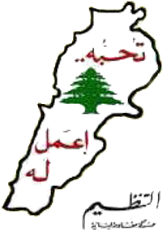Lebanese Civil War
== Lebanese Civil War ==
The Lebanese Civil War was a multifaceted civil war in Lebanon, lasting from 1975 to 1990 and resulting in an estimated 120,000 fatalities. As of 2012, approximately 76,000 people remain displaced within Lebanon. The war caused significant damage to the country's infrastructure and led to the collapse of the Lebanese economy.
Background[edit | edit source]
The roots of the Lebanese Civil War can be traced back to the complex social and political structure of Lebanon, which is characterized by a delicate balance of power among various religious and ethnic groups. The National Pact, an unwritten agreement established in 1943, aimed to maintain this balance by distributing political power among the major religious communities: Maronite Christians, Sunni Muslims, and Shia Muslims.
Major Factions[edit | edit source]
The war involved numerous factions, including:
- The Lebanese Front, a coalition of mainly Christian parties.
- The Palestine Liberation Organization (PLO), which had established a significant presence in Lebanon.
- The Progressive Socialist Party (PSP), led by Druze leader Kamal Jumblatt.
- The Amal Movement, a Shia political and military organization.
- The Hezbollah, a Shia Islamist political party and militant group.
- The Syrian Army, which intervened in 1976 and remained in Lebanon until 2005.
Key Events[edit | edit source]
- 1975: The war began with a series of violent incidents, including the Bus Massacre in April, which escalated tensions between Christian and Muslim factions.
- 1976: The Syrian Army intervened, initially to support the Maronite-dominated government but later shifted its alliances.
- 1982: The Israeli invasion of Lebanon aimed to expel the PLO. The Siege of Beirut and the subsequent Sabra and Shatila massacre were significant events during this period.
- 1989: The Taif Agreement was brokered, which restructured the political system and aimed to end the conflict.
- 1990: The war officially ended with the defeat of General Michel Aoun's forces and the implementation of the Taif Agreement.
Consequences[edit | edit source]
The Lebanese Civil War had profound effects on Lebanon, including:
- Massive loss of life and displacement of people.
- Severe damage to infrastructure and the economy.
- The rise of new political and militant groups, such as Hezbollah.
- Continued political instability and sectarian tensions.
Related Pages[edit | edit source]
- Lebanon
- National Pact
- Maronite Church
- Sunni Islam
- Shia Islam
- Druze
- Palestine Liberation Organization
- Progressive Socialist Party
- Amal Movement
- Hezbollah
- Syrian Army
- Israeli invasion of Lebanon
- Taif Agreement
- Michel Aoun
Search WikiMD
Ad.Tired of being Overweight? Try W8MD's physician weight loss program.
Semaglutide (Ozempic / Wegovy and Tirzepatide (Mounjaro / Zepbound) available.
Advertise on WikiMD
|
WikiMD's Wellness Encyclopedia |
| Let Food Be Thy Medicine Medicine Thy Food - Hippocrates |
Translate this page: - East Asian
中文,
日本,
한국어,
South Asian
हिन्दी,
தமிழ்,
తెలుగు,
Urdu,
ಕನ್ನಡ,
Southeast Asian
Indonesian,
Vietnamese,
Thai,
မြန်မာဘာသာ,
বাংলা
European
español,
Deutsch,
français,
Greek,
português do Brasil,
polski,
română,
русский,
Nederlands,
norsk,
svenska,
suomi,
Italian
Middle Eastern & African
عربى,
Turkish,
Persian,
Hebrew,
Afrikaans,
isiZulu,
Kiswahili,
Other
Bulgarian,
Hungarian,
Czech,
Swedish,
മലയാളം,
मराठी,
ਪੰਜਾਬੀ,
ગુજરાતી,
Portuguese,
Ukrainian
Medical Disclaimer: WikiMD is not a substitute for professional medical advice. The information on WikiMD is provided as an information resource only, may be incorrect, outdated or misleading, and is not to be used or relied on for any diagnostic or treatment purposes. Please consult your health care provider before making any healthcare decisions or for guidance about a specific medical condition. WikiMD expressly disclaims responsibility, and shall have no liability, for any damages, loss, injury, or liability whatsoever suffered as a result of your reliance on the information contained in this site. By visiting this site you agree to the foregoing terms and conditions, which may from time to time be changed or supplemented by WikiMD. If you do not agree to the foregoing terms and conditions, you should not enter or use this site. See full disclaimer.
Credits:Most images are courtesy of Wikimedia commons, and templates, categories Wikipedia, licensed under CC BY SA or similar.
Contributors: Prab R. Tumpati, MD





